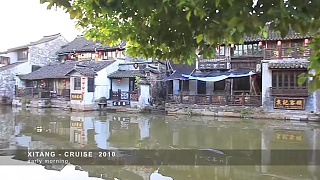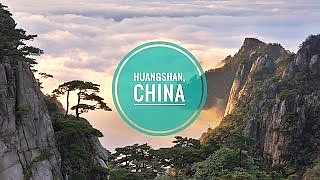
|
With Travel With Fawn ...
Daocheng Yading: The Last Shangri-La
Introduction
Daocheng Yading, often referred to as "The Last Shangri-La," is located in the southwestern part of Sichuan Province, China. This remote and pristine region is part of the Garzê Tibetan Autonomous Prefecture and is renowned for its stunning natural beauty, including majestic snow-capped mountains, clear alpine lakes, and lush forests. Daocheng Yading is considered one of the most beautiful places in China, attracting travelers seeking untouched landscapes and spiritual solace.
Geography and Location
Daocheng Yading is located at an altitude of over 4,000 meters (13,123 feet) above sea level. It is part of the Hengduan Mountain Range, where the Tibetan Plateau begins. The area is characterized by its unique geological formations, including towering peaks, deep valleys, and a series of glacial lakes. Its remote location has helped preserve its natural beauty and biodiversity, making it a haven for both nature lovers and wildlife enthusiasts.
Historical and Cultural Significance
Yading holds a special place in Tibetan Buddhism and is considered a sacred site. The three main peaks of Yading—Chenrezig (Xiannairi), Jampayang (Yangmaiyong), and Chanadorje (Xialuoduoji)—are believed to be manifestations of Bodhisattvas, making them objects of pilgrimage for Tibetan Buddhists. Throughout history, pilgrims have journeyed to Yading to pay their respects, meditate, and seek blessings.
The region is also home to several Tibetan communities that have maintained their traditional way of life. Visitors to Daocheng Yading can experience Tibetan culture, including local customs, religious practices, and Tibetan cuisine. The presence of Tibetan monasteries and prayer flags throughout the landscape adds to the spiritual ambiance of Yading.
Scenic Highlights
Three Sacred Mountains: The iconic peaks of Chenrezig (6,032 meters), Jampayang (5,958 meters), and Chanadorje (5,958 meters) are the main attractions of Yading. These snow-capped mountains are not only visually stunning but also spiritually significant. Chenrezig, the highest peak, is named after Avalokiteshvara, the Bodhisattva of Compassion.
Milk Lake (Niunai Lake): A striking turquoise glacial lake located at the base of Jampayang. Milk Lake's vivid color and the surrounding rugged terrain make it a popular destination for hikers and photographers.
Five Color Lake (Wuse Lake): Located near Milk Lake, Five Color Lake is famous for its ability to reflect multiple colors due to the minerals in the water and changing light conditions. The lake's surface can display hues of blue, green, yellow, and even purple, depending on the time of day and weather.
Luorong Pasture: A high-altitude meadow that offers spectacular views of the three sacred mountains. This pasture is a serene spot for visitors to rest and take in the natural beauty, with yaks grazing amidst the backdrop of towering peaks.
Chonggu Monastery: An ancient Tibetan Buddhist monastery located at the entrance of Yading Nature Reserve. The monastery provides insights into Tibetan religious practices and serves as a spiritual gateway to the sacred mountains.
Trekking and Hiking Routes
Daocheng Yading is a paradise for trekkers and adventure enthusiasts. Several well-marked trails offer varying levels of difficulty, catering to both casual hikers and experienced trekkers. The most popular trekking route is the Yading Outer Kora, a challenging multi-day trek that circles the three sacred mountains. This trek provides a comprehensive experience of Yading's natural beauty and spiritual significance.
Another popular option is the Inner Kora, a shorter but still demanding trek that takes hikers closer to the base of the sacred peaks. For those seeking a less strenuous experience, day hikes to Milk Lake and Five Color Lake offer stunning views and a taste of Yading's grandeur without the need for extensive trekking.
Flora and Fauna
Daocheng Yading is known for its rich biodiversity. The region's varied altitudes and climates support a wide range of plant and animal species. The lower altitudes are covered in dense forests of pine, fir, and rhododendron, which bloom spectacularly in spring. As you ascend, the landscape transitions to alpine meadows, home to wildflowers and medicinal herbs.
The region is also a sanctuary for wildlife, including species such as the Tibetan antelope, red panda, snow leopard, and various birds of prey. Birdwatchers will find Yading to be a prime location for observing both resident and migratory bird species. Efforts are made to preserve the ecological integrity of Yading, making it a model for conservation in China.
Climate and Best Time to Visit
The climate of Daocheng Yading is characterized by cold winters and mild summers, with significant temperature variations between day and night. The best time to visit is during the spring (April to June) and autumn (September to October) months. In spring, the region comes alive with blooming flowers and lush greenery, while autumn offers stunning foliage and clear skies, making it ideal for photography and outdoor activities.
Winter visits are possible but can be challenging due to heavy snowfall and cold temperatures, which may restrict access to some areas. Travelers should be prepared for high-altitude conditions year-round and pack accordingly.
"Daocheng Yading is more than just a destination; it's a journey into the heart of Tibetan culture, spirituality, and the awe-inspiring beauty of nature." - A Travel Enthusiast
Travel Tips and Recommendations
Altitude Sickness: Daocheng Yading is located at a high altitude, and visitors may experience symptoms of altitude sickness, such as headaches, dizziness, and nausea. It is advisable to spend a day acclimatizing in Daocheng town before ascending to Yading.
Accommodation: Accommodations in Yading range from basic guesthouses to more comfortable hotels in Daocheng town. It's recommended to book in advance, especially during peak seasons.
Permits: Foreign visitors may require permits to enter certain areas of the Tibetan Autonomous Prefecture. It's best to check with local authorities or travel agencies for the latest requirements.
Guided Tours: Hiring a local guide can enhance your experience by providing insights into the culture, history, and natural features of Yading. Guides can also help navigate the trekking routes and ensure a safe journey.
Respect Local Customs: As a region with deep cultural and religious significance, visitors should respect local customs and traditions. This includes not disturbing prayer flags, stupas, or other religious artifacts, and seeking permission before photographing people or religious ceremonies.
Getting There
Daocheng Yading can be accessed by air and road:
Transport Mode
Details
By Air
Daocheng Yading Airport is the world's highest civilian airport, located at an altitude of 4,411 meters. Direct flights are available from major Chinese cities such as Chengdu, Chongqing, and Xi'an. From the airport, visitors can take a bus or taxi to Daocheng town and then to Yading.
By Road
Road travel to Daocheng Yading involves scenic but long drives through mountainous terrain. Buses and private vehicles can be hired from Chengdu, with the journey taking around 20-25 hours. The drive, though lengthy, offers spectacular views of the Tibetan Plateau and the chance to explore other attractions en route.
|
 Western attacks on China
Western attacks on China




